A few miles (hard measuring habit to break, and why should I?) south of Kincardine, Ontario, is Reid’s Corner Antiques. Now this is my kind of antique shop: not an ounce of froufrou.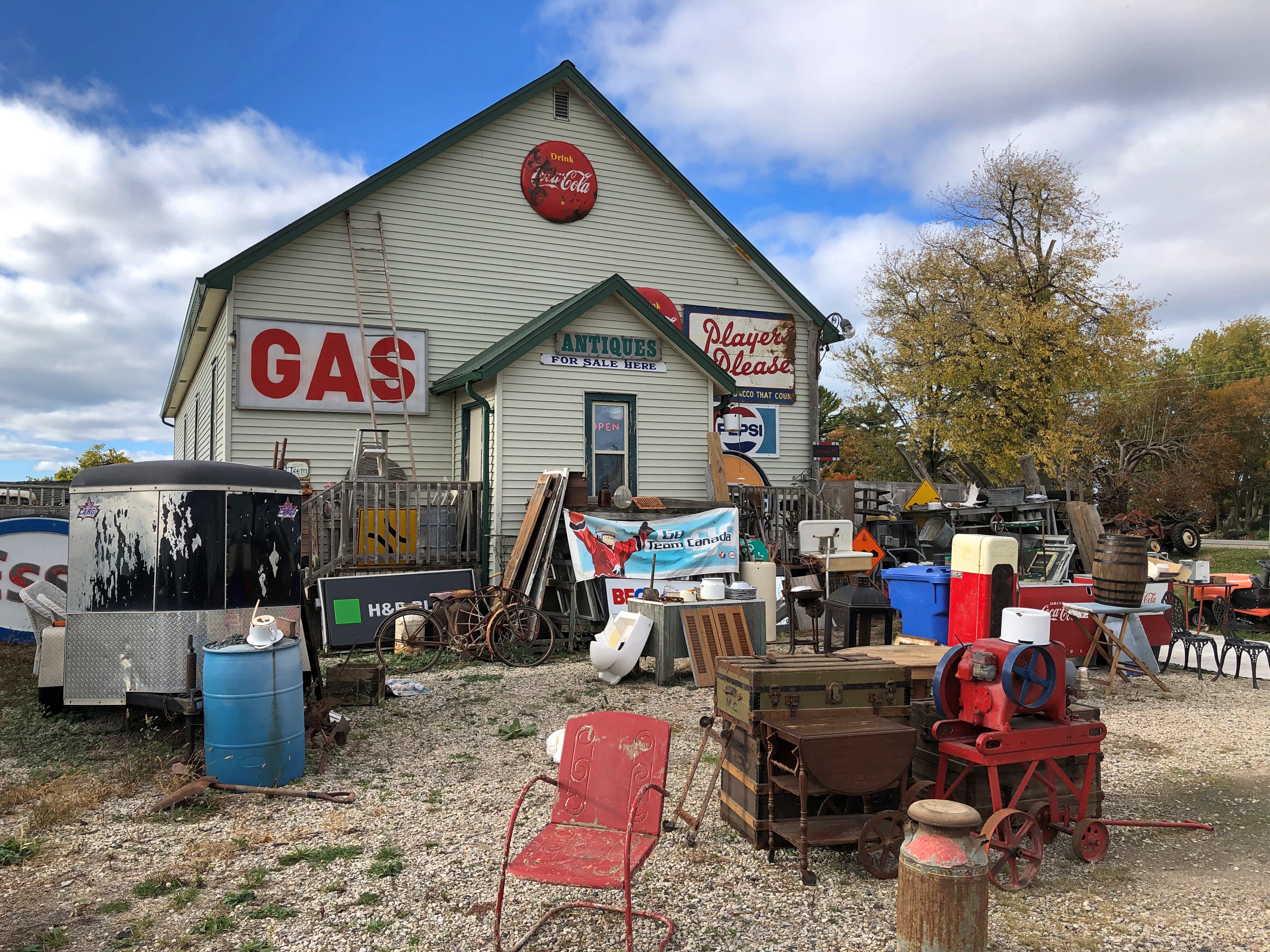
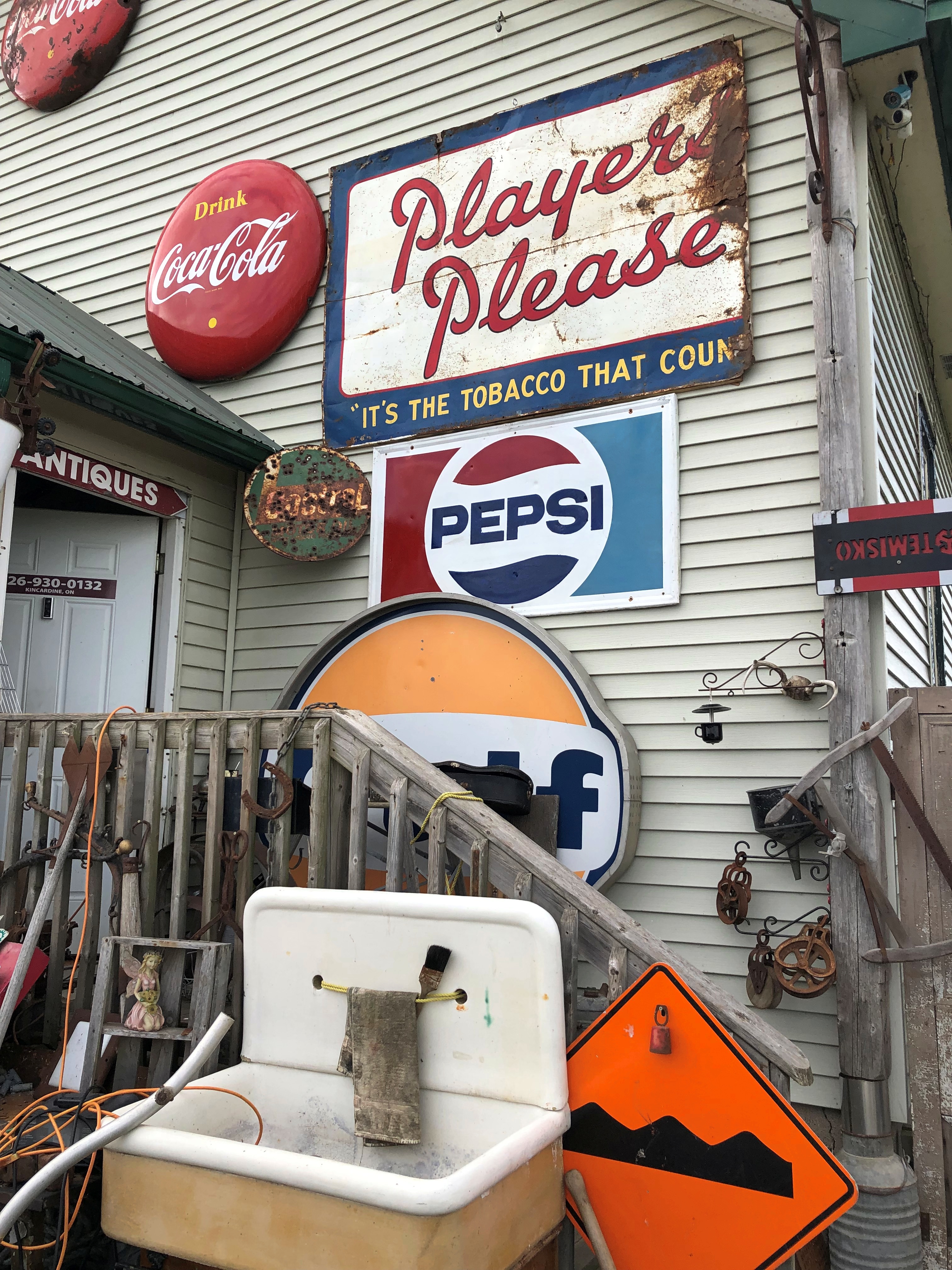
I think Reid himself waived us into the building, which had no one else inside. He was a strong-looking fellow in the middle of middle age, and he had a noisy machine on a truck to attend in some way. So we went in.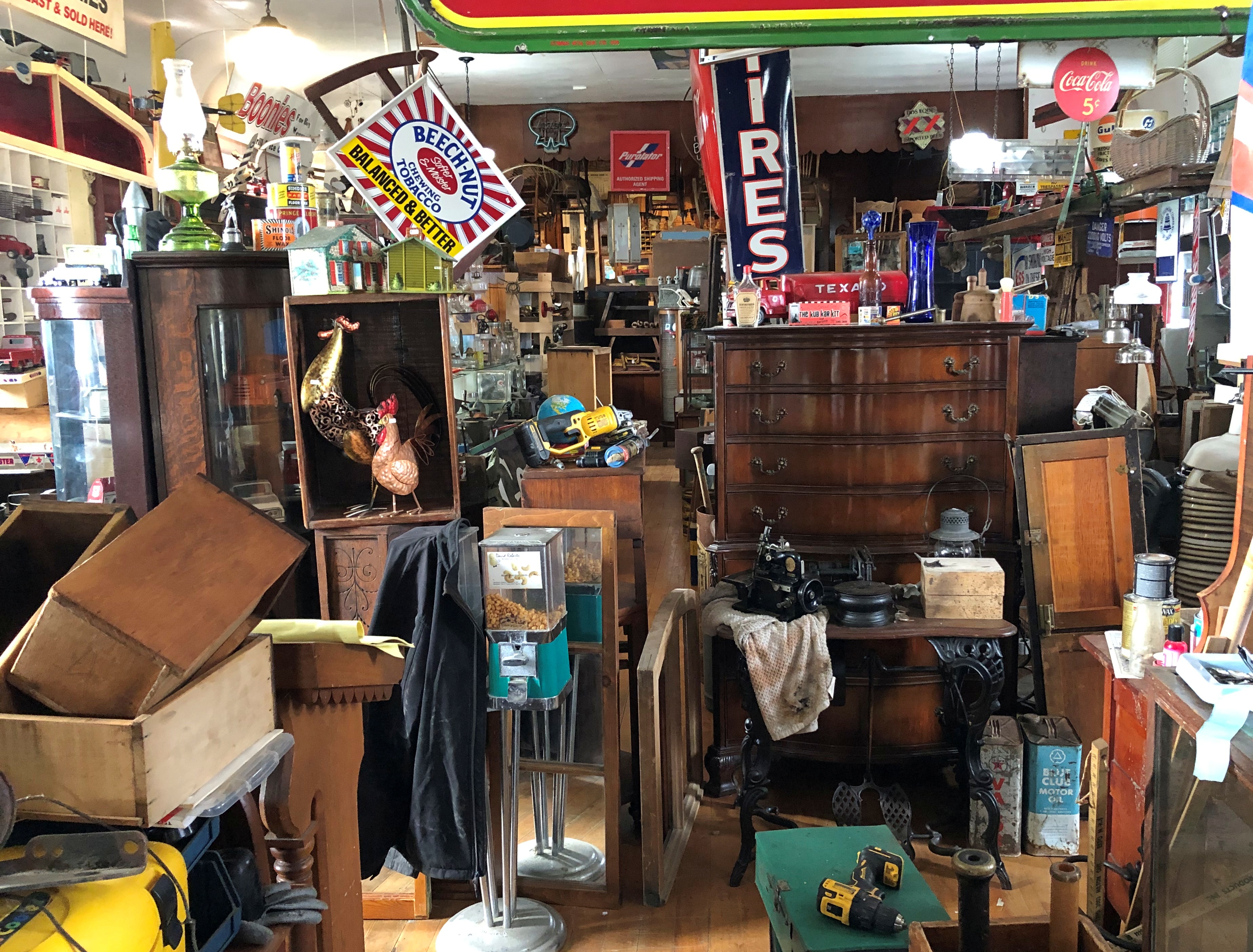
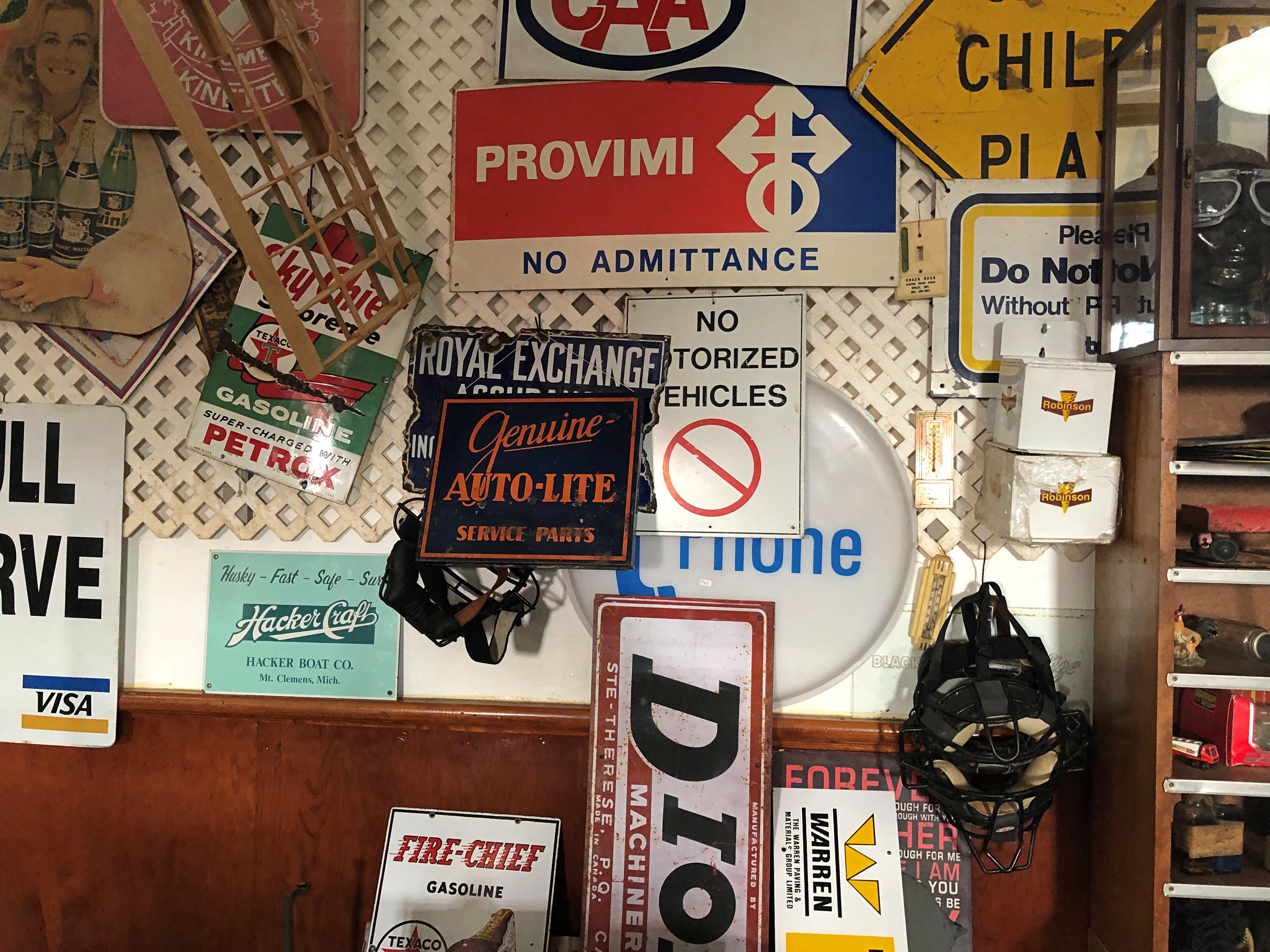
It’s easy to feel at home in clutter. I know not everyone feels that way, but I also don’t care. All the many Reid’s Corners in the world are a place to revel in the quantity and quality, but especially the quantity, of the vast amount of stuff produced by people.
A place like this ought to be supported by a little cash money, at least. This was under consideration for purchase.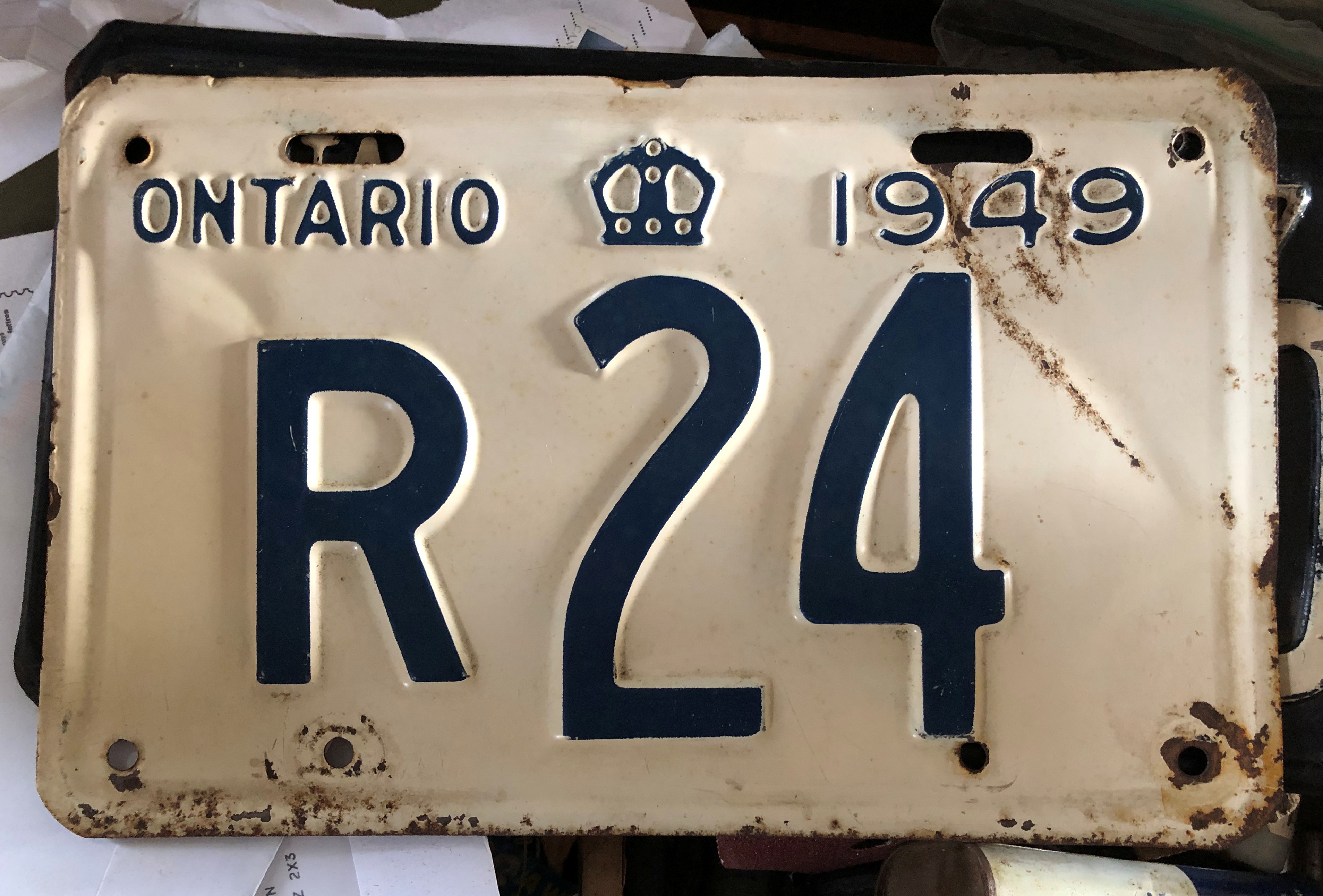
In the end I went with a newer plate, one not quite as old as I am, which joins plates from Texas, Tennessee, Illinois and a Washington state BIGFOOT gag plate in the garage.
Reid’s Corner happens to be on Ontario 21, the two lanes that parallel the Lake Huron shore. If you’re on the way to London, you head southeast from Goderich on Ontario 8 briefly, and then a slightly different direction on Ontario 4. The place where highways 8 and 4 meet is Clinton, Ontario, pop. 3,200.
Near the juncture I caught sight of a fine block of buildings – the Victoria Block (see no. 53), erected 1877. Erected by genuine Victorians, by gar.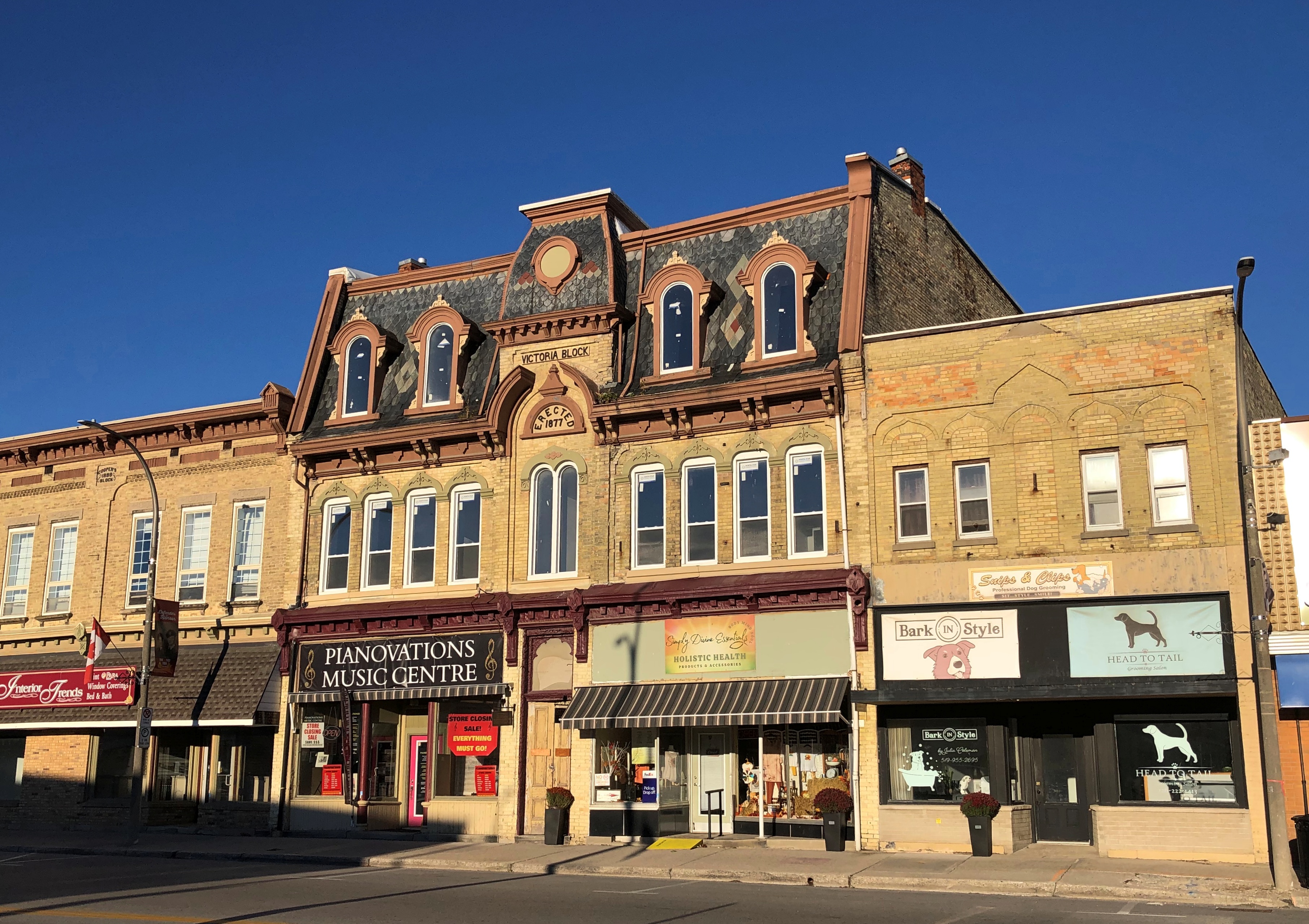
Nice. Then there was a large radar antenna perched in a traffic island.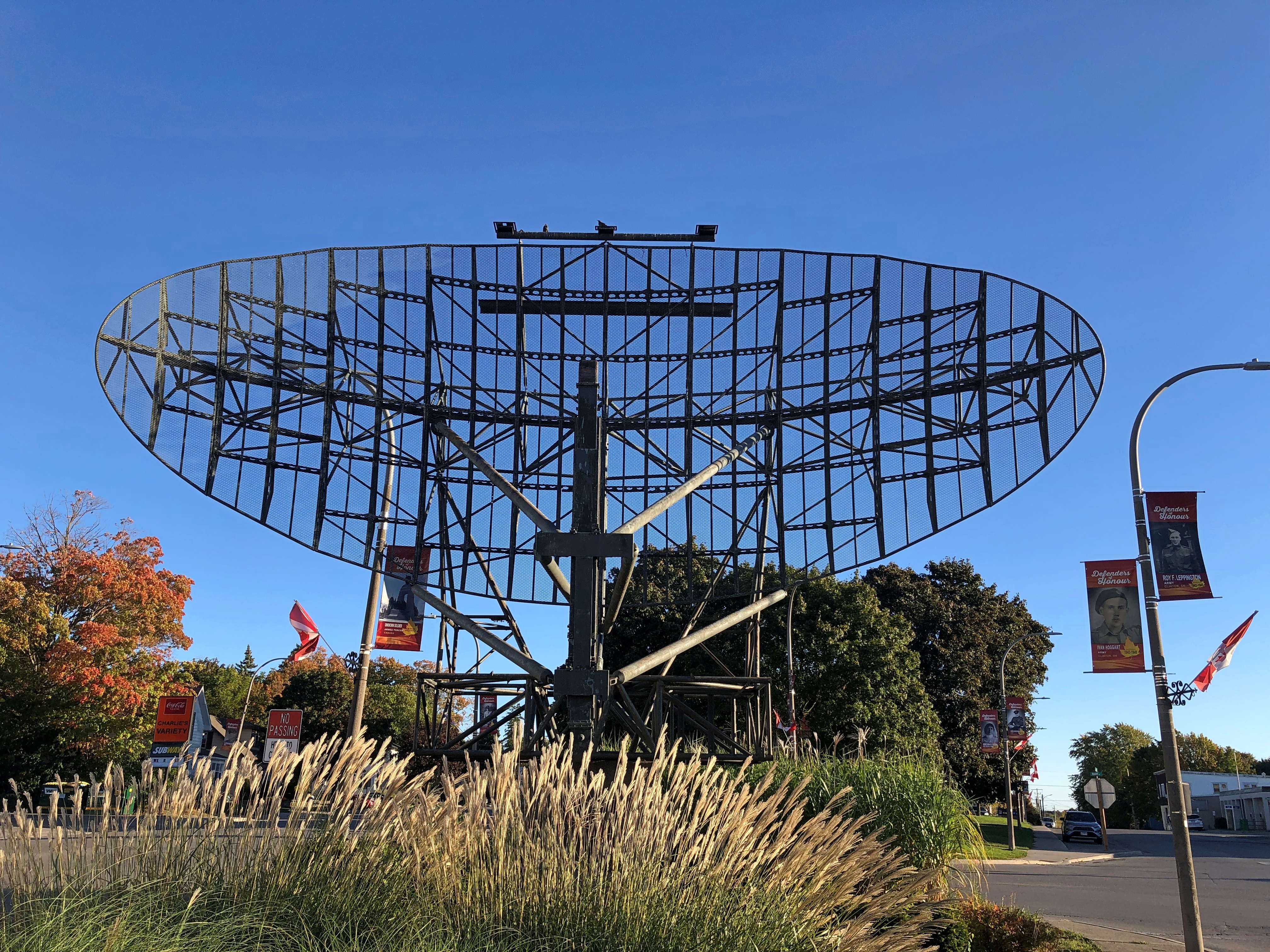
Double take. I have to see that, I told Yuriko as I parked the car on the side of the road. Traffic was fairly light in Clinton, so it was no complicated thing to take a closer look on foot.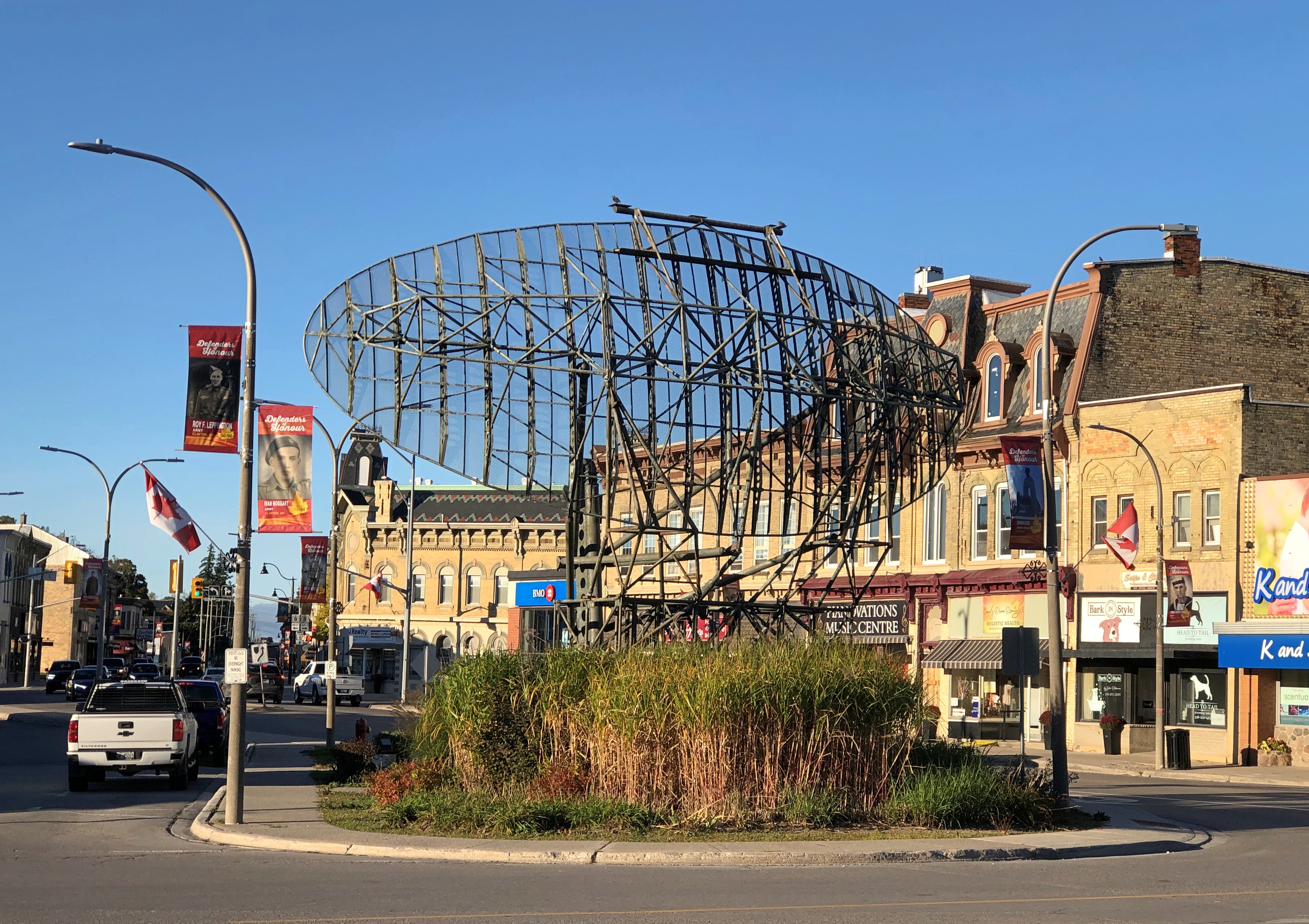
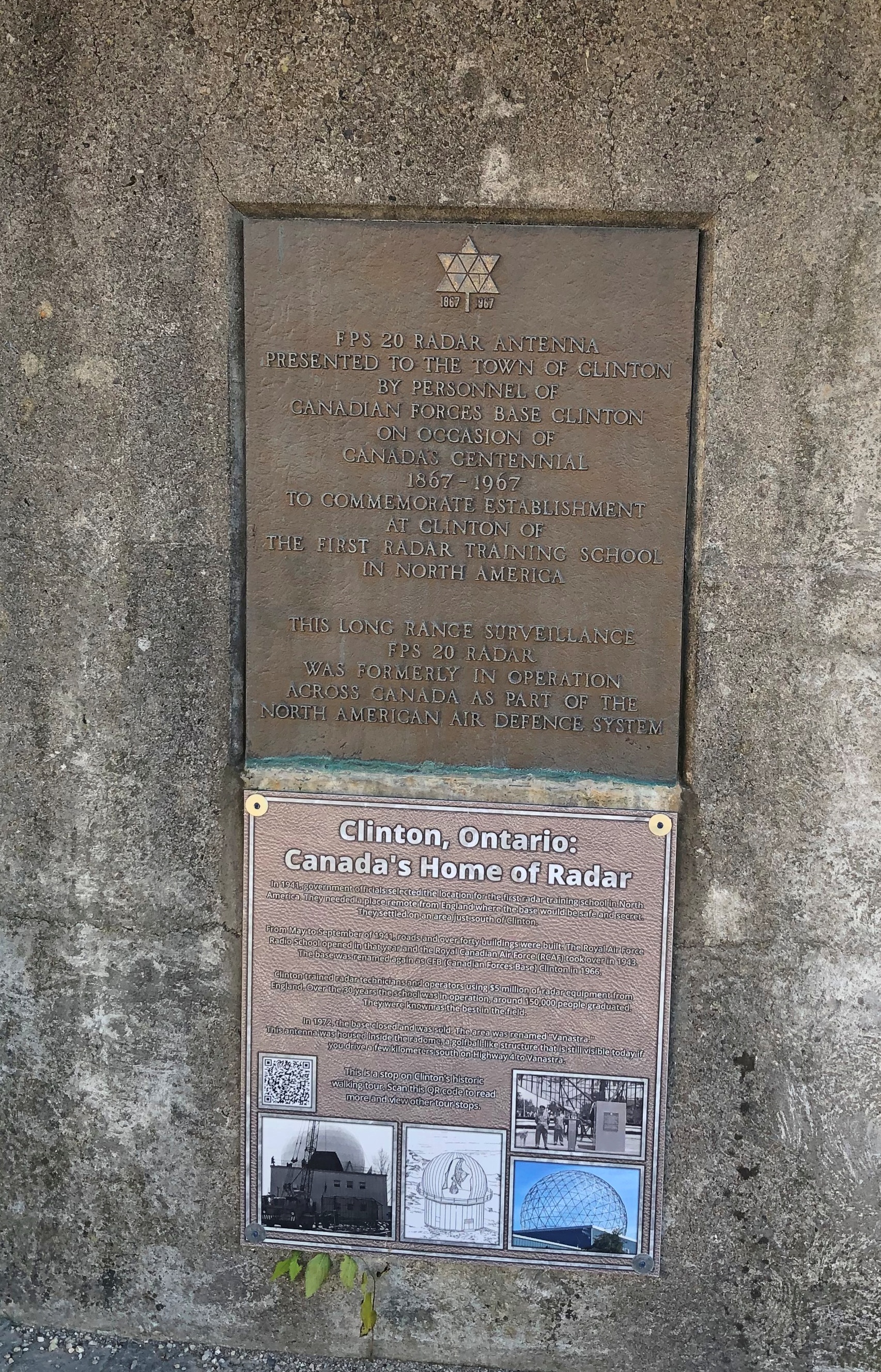
Like Reid’s shop, the wider world has human clutter. Not just objects, but stories. Early in WWII, a secret site near Clinton became the first radar training school in North America, the plaques relate, set up by the Royal Air Force as a safe location. The Canadian armed forces kept the facility open long after the end of the war and wartime secrecy, through the mid-Cold War, but eventually closed it. The town got a really big memento on the occasion of the country’s centennial in 1967.